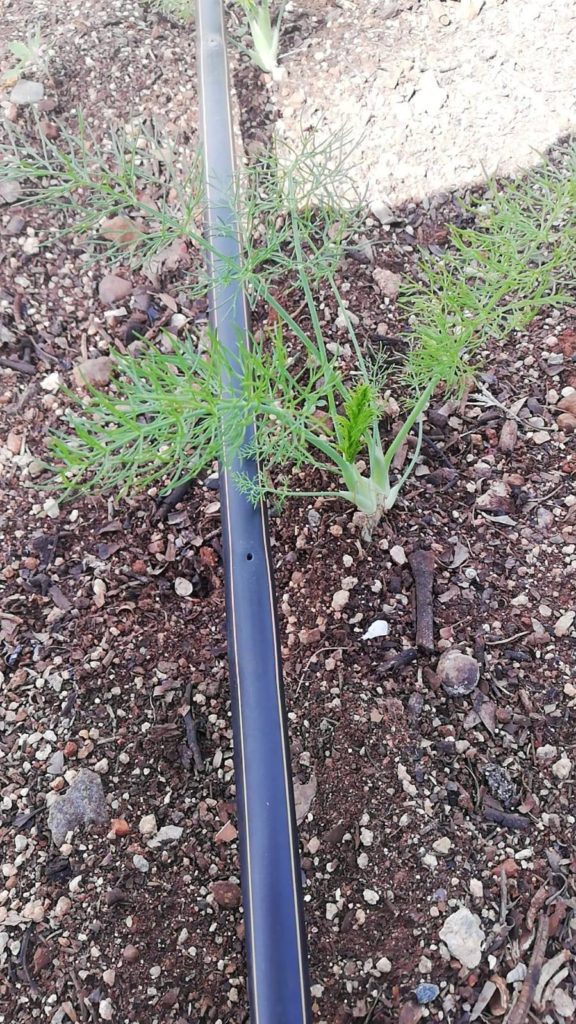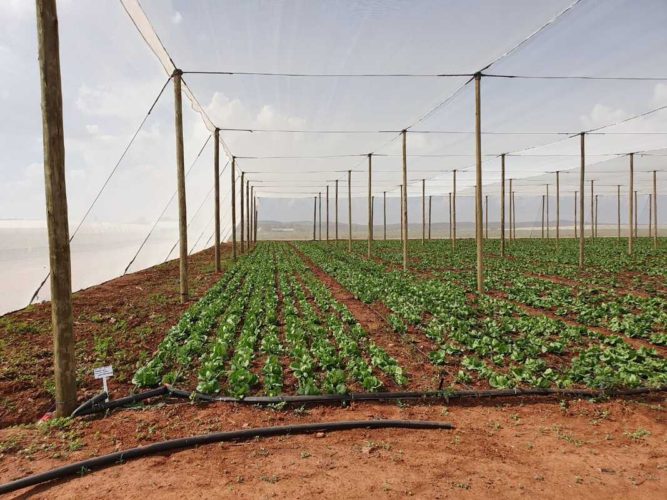Getting sufficient moisture and nutrients to plants growing in an intensive setting such as a shadecloth structure or greenhouse is one of the keys to success in what is, after all, the ultimate in precision farming.
Too much moisture and there is a very real chance of mould, algae and fungus developing to ruin the crop. Too little moisture, particularly in the hot environment of a greenhouse, and plants will be stressed at best, and dead at worst. And uneven water will result in some plants thriving and others being stunted.
Types of Irrigation

Generally, therefore, the less free moisture and mist in the air the better, and sprinklers that create masses of fine mist may lead to growth of mould and disease. If a sprinkler system is necessary a common type is an overhead system not unlike the fire protection sprinklers found in offices and factories that deliver drops of water rather than fine droplets.
But at the very basic end in a small set up one could simply go for hand-watering using hosepipes fitted with a rose. While cheap and simple, this is labour-intensive and will also result in wet floors and uneven delivery.
If one opts for a hydroponic or aeroponic growing system one’s moisture and nutrient mixture is delivered in closed pipework, and any excess similarly removed in closed pipework, so the chance of spillage and moisture build-up is minimised.
Perhaps the ultimate form of water-wise delivery, certainly in extensive operations for bare earth plantings is through drip irrigation, and South Africa has some of the best drip-irrigation system practitioners in the world, alongside those in Israel, another water-stressed country with extensive under-cover farming operations.
Drip irrigation uses a lightweight plastic pipe fitted with a dripper (basically a hole of a certain precise diameter) every 30 or 60cm, which delivers a set amount (commonly one or two litres) of water or nutrient mixture under low pressure to each plant every hour.
Benefits of Drip Irrigation
A complete drip irrigation system incorporates a pump on a timer which feeds water and if necessary a nutrient solution from a reservoir through an adjustable mixer and filter into the pipe network, which is connected via a manifold which can be fitted with individual valves to switch the flow on or off to individual dripper lines.
The pipework is easy to lift on and off the beds and if everything is aligned ~ seedlings and drippers ~ the plants receive their moisture directly to the area in which their roots are developing. In other words, no wet patches, no wastage and minimal chance of algae etc.
And, of course, the piping etc, once correctly measured and positioned, can be used multiple times.
Although the materials and components used to set up a drip irrigation system are in themselves neither expensive or complicated, the process of manufacturing the dripper line is complex as the drippers need to be inserted into the thin-walled pipe at precisely-predetermined intervals. For this reason much of the dripper line piping sold in South Africa is imported.
That changed radically late last year, however, when irrigation specialists Afriq Water of Tarlton installed their own dripper line manufacturing plant, which now produces quality line at a fraction of the cost of imported equivalents.
(Main image: Dicla Farm & Seed)


What do drip line you recommend for 2 ha cabbage production.
Pricing for this please
Speak to Afriq Water in Tarlton (072 153 3646 Helana. They are experts, and manufacture dripline in a number of thicknesses and dripper spacings, as well as supplying everything else you will need (eg couplings, bends, end-pieces, taps, mixers, pumps, etc.
Need a drawing for the installation of shade netting as per your picture – best for shade cloth structure please